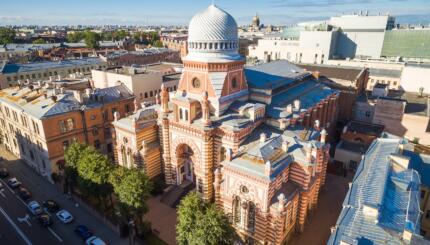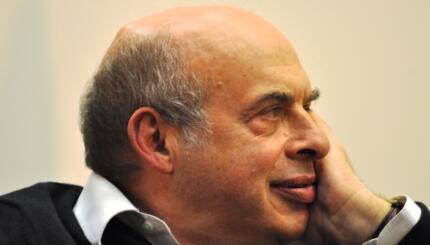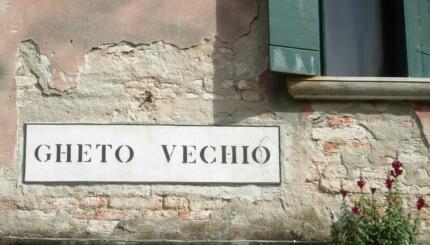Walter Benjamin’s life and work is difficult to categorize. A Renaissance man of letters, he wrote on topics ranging from art history and aesthetics to linguistics, politics, and psychedelic drugs. An ardent Marxist and critical theorist, Benjamin also fused his understanding of Jewish mysticism with historical materialism, prompting critic Terry Eagleton to call him the “Marxist Rabbi.” His close friends included superstars of the Frankfurt School like Theodore Adorno and Max Horkheimer, as well as political theorist Hannah Arendt and the great scholar of Jewish mysticism Gershom Scholem.
Benjamin’s chief contributions to twentieth century intellectual history are likely his work on the aesthetic significance of image reproduction (like photography) and the character of modern urban spaces, such as the Parisian arcades, though he is also known as a consummate translator of Proust and Baudelaire.
Benjamin’s life has also provided a theoretical model for a distinctly ambivalent stance on Jewish identity. Pushed out of Nazi Germany in the 1930s, Benjamin became a Jewish expatriate in Paris until he was forced to flee once again. In a tragic series of events, Benjamin narrowly missed escaping to neutral Spain. He died near the Spanish border and became the intellectual martyr of World War II.
Childhood Environment
Walter Benjamin was born in Berlin in 1892 to a liberal, educated Jewish family. His father was a businessman who sometimes sold art at auction, and encouraged Benjamin’s intellectual pursuits by helping him collect a vast philosophy library. As a boy, Benjamin watched his stately residential neighborhood undergo rapid changes because of industrialization. Always a keen observer of city life, he often referred to his early childhood memories of Berlin in later writings and theories about the urban proletariat and social injustice.

Help us keep Jewish knowledge accessible to millions of people around the world.
Your donation to My Jewish Learning fuels endless journeys of Jewish discovery. With your help, My Jewish Learning can continue to provide nonstop opportunities for learning, connection and growth.
 Benjamin’s political activity germinated in Gustav Wyneken’s private school, which sought to create a youth movement devoted to the ideals of Kant, Hegel, Goethe, and Nietzsche. In 1912, Benjamin began his undergraduate education, which would take him to the universities of Freiberg, Munich, and Berlin where he studied under the neo-Kantian philosopher Heinrich Rickert, art historian Heinrich Wölfflin, and sociologist Georg Simmel.
Benjamin’s political activity germinated in Gustav Wyneken’s private school, which sought to create a youth movement devoted to the ideals of Kant, Hegel, Goethe, and Nietzsche. In 1912, Benjamin began his undergraduate education, which would take him to the universities of Freiberg, Munich, and Berlin where he studied under the neo-Kantian philosopher Heinrich Rickert, art historian Heinrich Wölfflin, and sociologist Georg Simmel.
Assimilation into a Hostile Society
When he was 23, Benjamin met the younger Gershom Scholem through his youth movement activities. The young men engaged in intense intellectual debate, talking late into the night about philosophy, poetry, and the future of assimilated German Jews. This last topic was to occupy both men throughout their scholarly careers as they took widely divergent paths. Benjamin succinctly articulated the conflict in a letter to his friend Ludwig Strauss in 1912:
“If we are indeed two-sided, Jewish and German, all our energy has hitherto been directed towards affirming the German; the Jewish has perhaps only been an exotic, southern (worse yet, sentimental) aroma in our production and our lives. Nor will any individual, short of being an artist, develop this quality equally within himself. But the way will be found.”
Benjamin always maintained some distance from his fellow Germans, and from the presumed German audience to which he addressed most of his writing. He, like so many intellectually prominent German Jews of the time, was stuck in the morass between anti-Semitism and modernity. This in-between space did not allow him to retreat into traditional Judaism, nor did it allow him to assimilate entirely into a hostile host society.
It should be noted that Benjamin had almost no formal Jewish education, and never participated in Jewish religious institutions. But his Jewishness was an abiding awareness of his cultural difference. His drive for what he called “redemption” through his writing clearly had Jewish messianic undertones.
Academics and Politics
Soon after completing his undergraduate education, Benjamin married Dora Pollack. However, the marriage did not last. Benjamin soon moved out of their shared apartment and turned his focus to his studies, completing a doctorate in philosophy with a dissertation on “The Concept of Criticism in German Romanticism” in 1920. But an academic career eluded him when several professors at the University of Frankfurt deemed his work incomprehensible and opaque. He was able to survive by writing freelance essays and articles for journals and newspapers, but had to endure near-poverty living conditions.
While traveling in Italy in 1924, Walter met and fell in love with the Latvian revolutionary Asja Lacis. It was in Italy that he started developing his interest in Marxist and communist thought, moving away from his youth movement anarchism and German idealism. While he didn’t join the Communist Party, he and Lacis traveled to Moscow to live and study for several months.
In the 1930s, Benjamin developed his work on several topics. He wrote about language theory, contemporary authors, translation, modern liberalism, Goethe’s novels, even children’s books. His major essays question how modern technology and the modernizing state affects everyday life and cultural practice. He also frequently engaged left-wing theories of art and culture, becoming a staunch critic of fascism.
Even after Scholem moved to Jerusalem to teach at Hebrew University, Benjamin kept up their robust intellectual correspondence. The two were at odds about the importance of religious and spiritual belief and spent much time pitting rationality against spiritual faith. Benjamin always maintained that his interest in kabbalistic texts and the history of Judaism was purely academic and not religious.
The Arcades Project
In 1927, after he had moved to Paris, Benjamin wrote a very short article entitled “Arcades” with his friend Franz Hessel which was to become the project that Benjamin pursued until his death. What was eventually published as The Arcades Project was inspired by the architectural structure of the Parisian “arcades,” pedestrian passages through buildings that were lined with small businesses. Over a period of 13 years, he compiled sundry lists and observations about the streets, department stores, panoramas, exhibitions, light fixtures, fashions and the particular social milieu of prostitutes, gamblers and shoppers who frequented the arcades.
In 1934, when the Institute for Social Thought (the Frankfurt School) began paying Benjamin for his research and writing, he started to address political and economic aspects of the arcades, focusing on issues of urban renewal, technological innovation, and economic injustice that he witnessed. Published in English only in 1999, The Arcades Project was a 925-page compendium of his loosely organized musings.
Of all of his other works, his essay “The Work of Art in the Age of Mechanical Reproduction” (1936) was the most influential. Published in the Institute of Social Research’s journal of critical theory, it addressed how the practice of copying art images changes both the value of the image and its reception by the viewer. Benjamin’s writing was also critical of the Third Reich’s use of reproduced images to promote obedience to the fascist regime.
Untimely End
Because of his anti-fascist advocacy, the Gestapo requested Benjamin’s expatriation from Paris in February 1939. When France declared war on Germany, all Germans living in France were interned in camps. Benjamin was sent to the village of Nevers in Burgundy, but was released due to interventions by his friends. He continued to work, but in June 1940 he was forced to flee Paris and left his manuscript of The Arcades Project in the care of then-librarian Georges Bataille at the French National Library.
Just before Benjamin left Paris, Scholem urged him to come to Palestine, but Benjamin believed that he would only be secure in the United States. He then attempted to travel through neutral Spain by crossing the Pyrenees on foot. On the night of September 26, 1940, he was falsely alarmed when he was stopped by General Franco’s border guards and must have assumed he was going to be captured again. He was later found dead (probably from suicide) in his hotel room, unaware that he was not under suspicion and could have escaped to freedom.
Continued Influence
As the Frankfurt School theorists established their intellectual presence in the US after the war, Benjamin’s writings continued to have a profound influence on social thought and cultural criticism.
His tragically short life also became the subject of Jay Parini’s novel Benjamin’s Crossing. Charles Bernstein and Brian Ferneyhough wrote the opera “Shadowtime” based on Benjamin’s life, and Susan Sontag used his character as inspiration for her story, “Under the Sign of Saturn”. His lengthy and highly erudite correspondence with Scholem was published in The Correspondence of Walter Benjamin and Gershom Scholem, 1932-1940.


